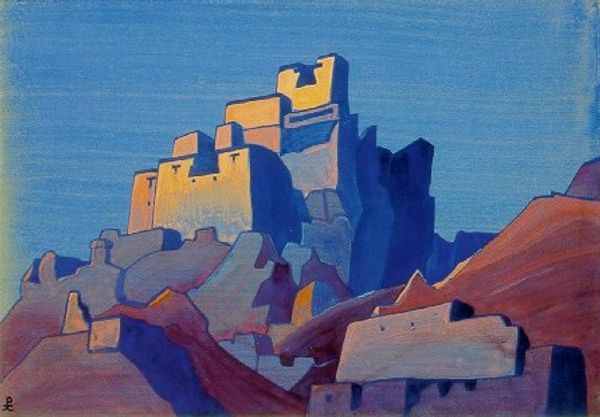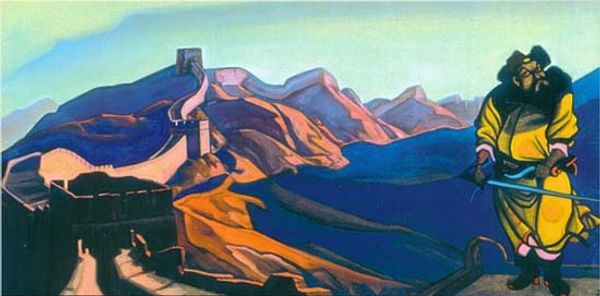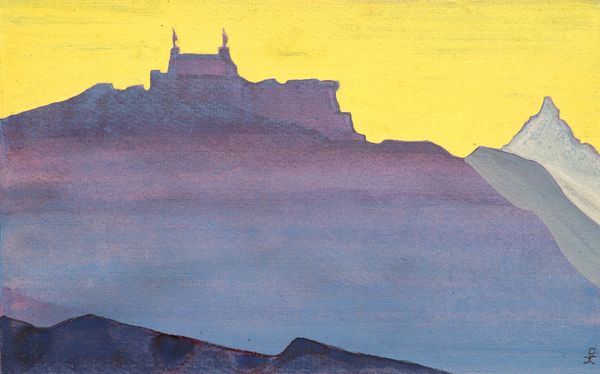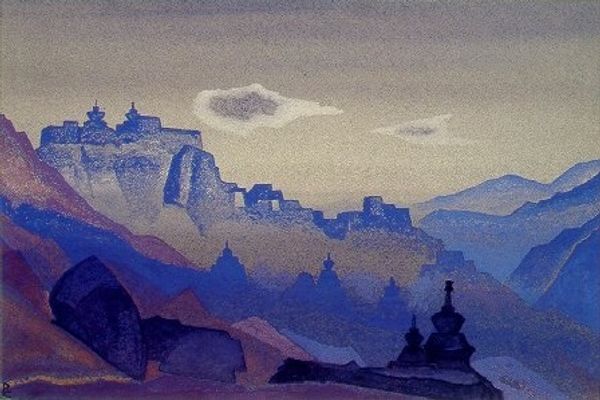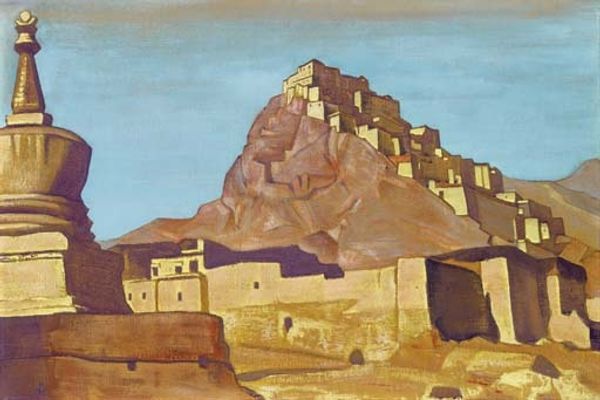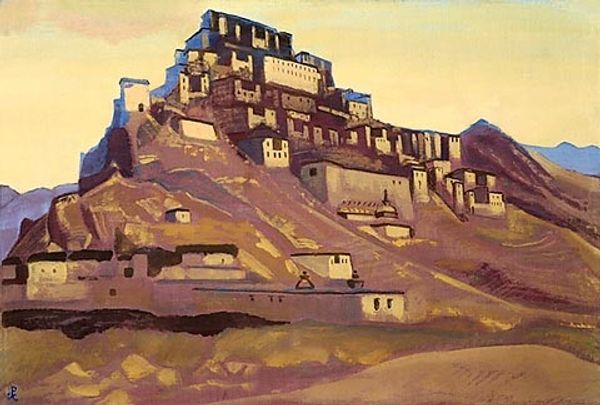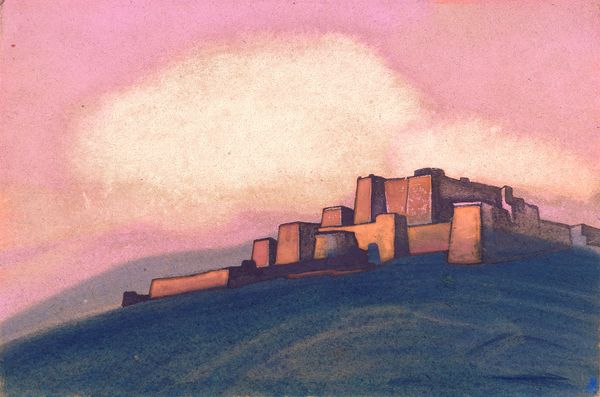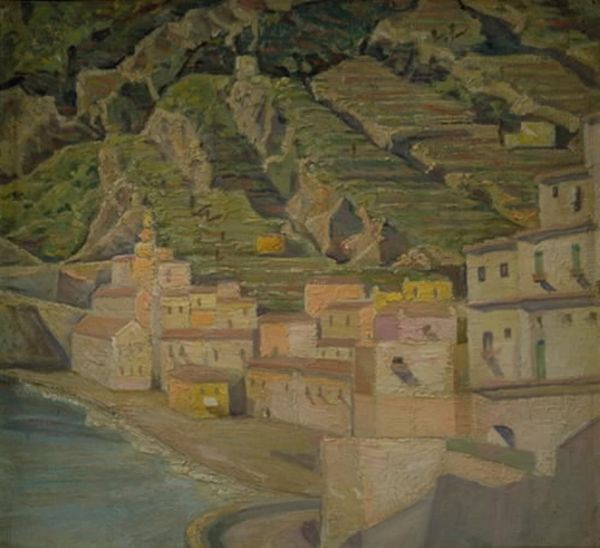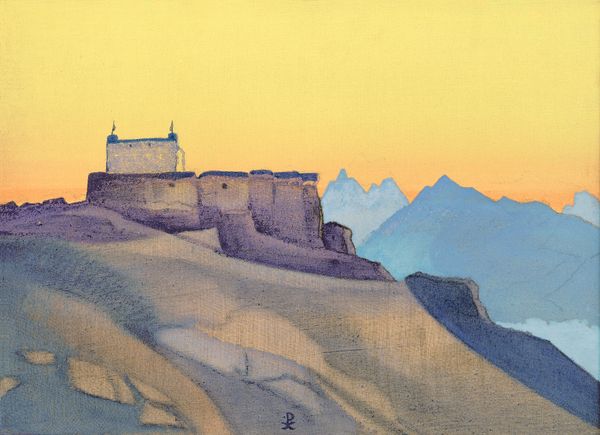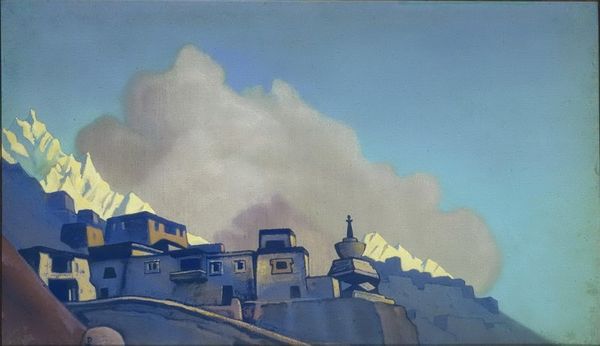
Copyright: Public domain
Editor: So, this is Nicholas Roerich's "Monastery (Brahmaputra)" from 1937. The oil paint is applied in broad, almost mural-like strokes. There’s a distinct lack of detail, especially in the rendering of the monastery itself. What stands out to you about this work? Curator: Immediately, I notice the materials Roerich chose and how they're deployed. The thickness of the oil paint, applied in flat planes, evokes the very act of building – brick upon brick. It moves us away from a simple representation of a landscape toward an engagement with the physical construction of these spaces, don't you think? How does that materiality relate to the subject for you? Editor: I see what you mean. The almost clumsy application makes it feel more grounded, less ethereal despite the romantic, pastel sky. It almost highlights the labour of building, like a monument to the physical work behind spiritual aspiration. Curator: Exactly! And considering Roerich's involvement in Theosophy, shouldn't we question how his spiritual beliefs translated into the social reality of artistic production, and what the making of this art communicates about his time? Editor: So it's less about the serene image of the monastery and more about questioning what it took to make both the monastery and the painting itself? The raw materiality versus the transcendent subject. Curator: Precisely. What's left when we peel back the surface layer of romanticism? A study of materials and methods employed within specific historical and social conditions to create a kind of cultural capital and an object with exchange value. Editor: This definitely provides a fresh way of understanding this seemingly straightforward landscape. Thanks! Curator: My pleasure, considering labor and resources is crucial to any complete view of this artwork.
Comments
No comments
Be the first to comment and join the conversation on the ultimate creative platform.
